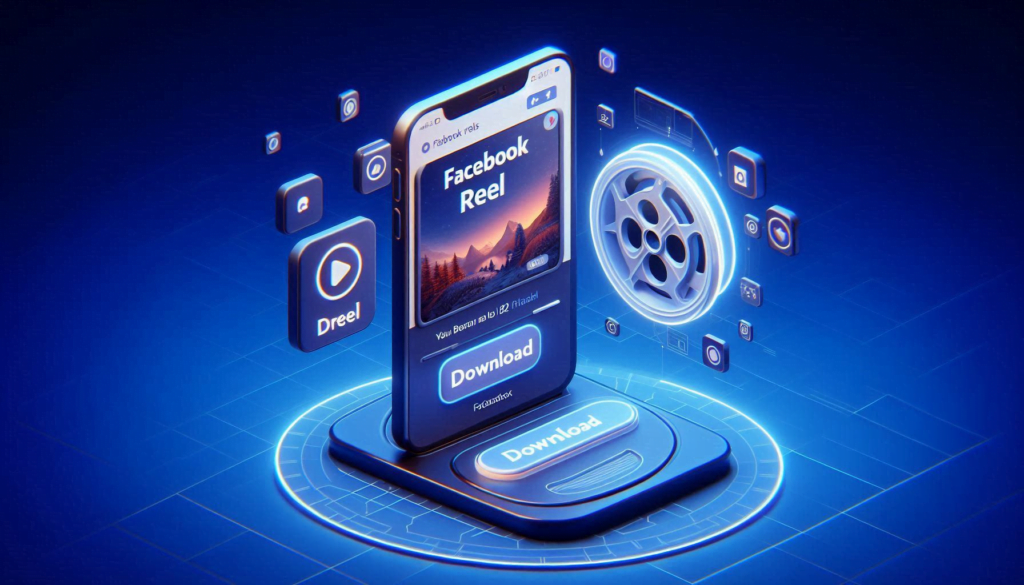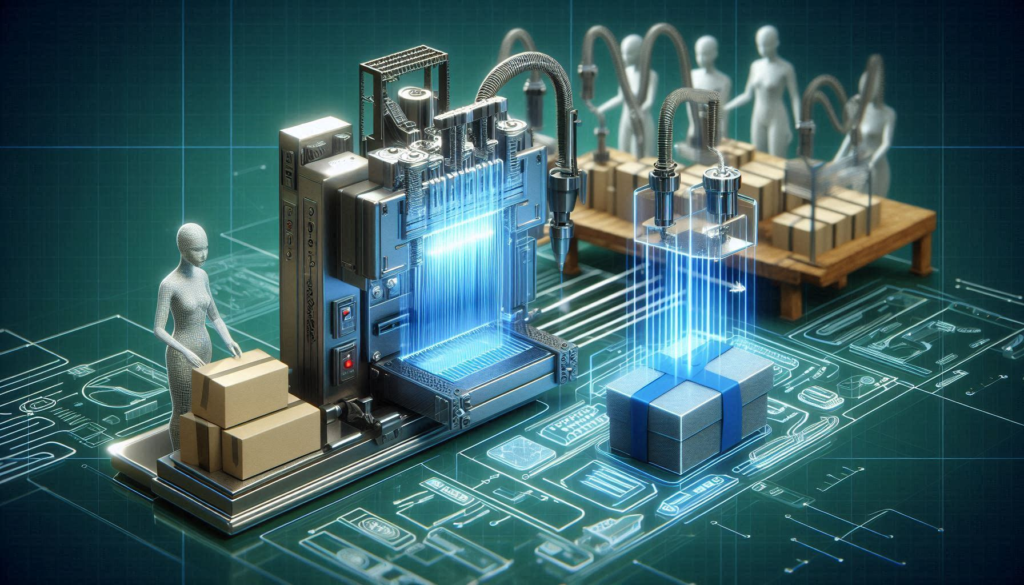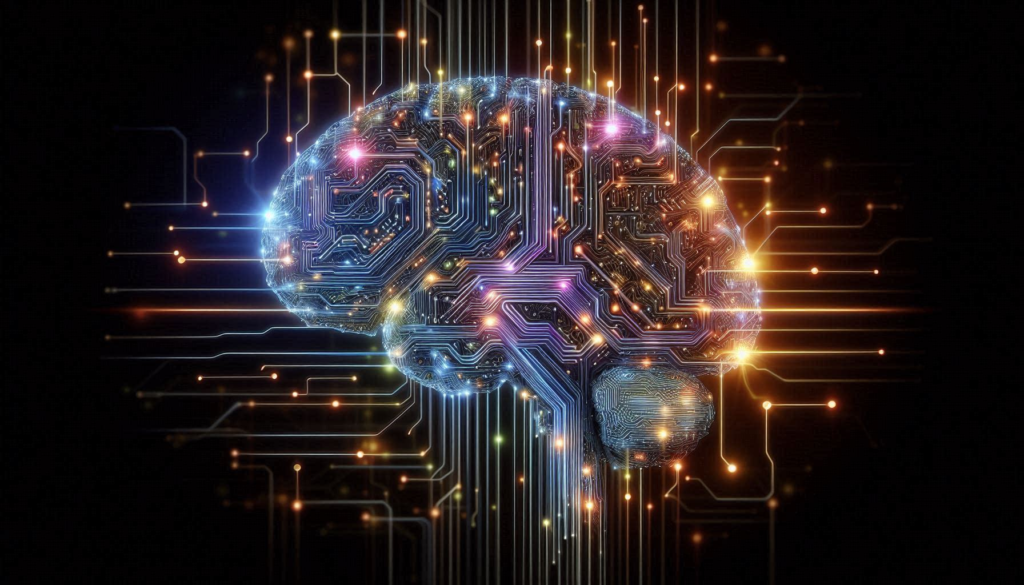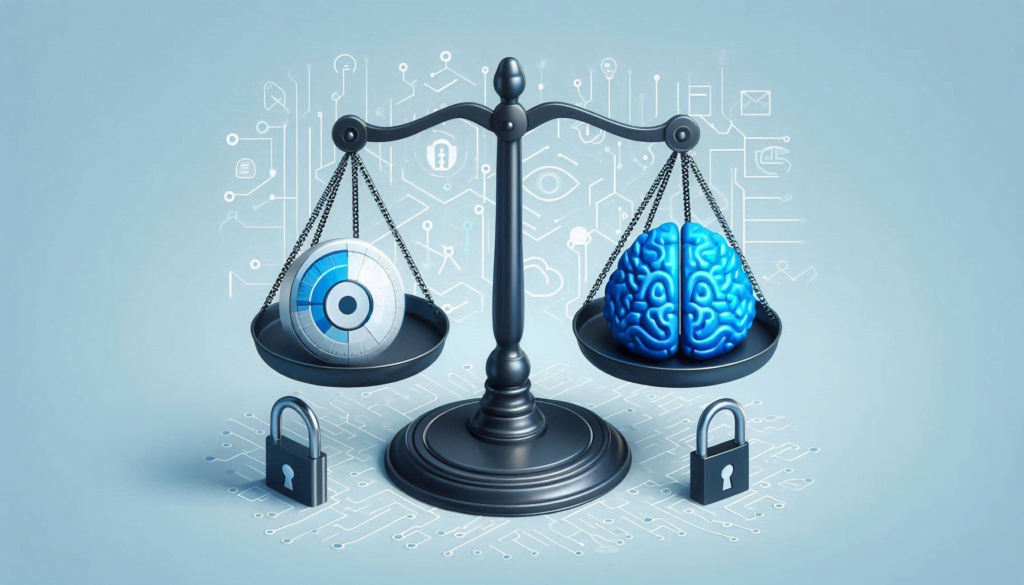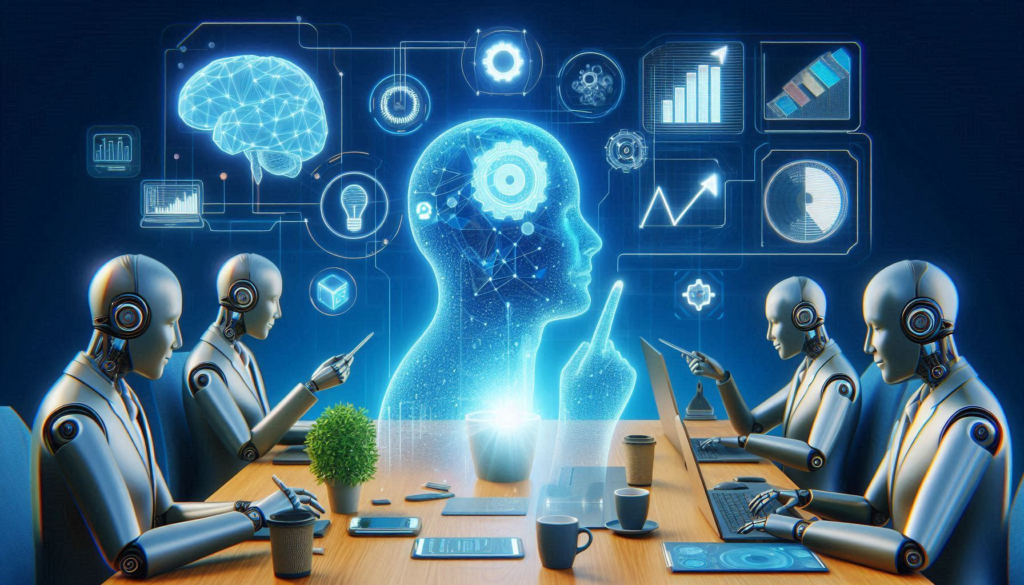Welcome to Technology Moment, your go-to source for understanding how cutting-edge innovations are reshaping the way we live and work. One such game-changer is the Internet of Things (IoT).
In this blog, we’ll dive into how you can seamlessly integrate IoT applications into your workflow, regardless of your industry. From smart cities to healthcare, agriculture to logistics, IoT is transforming operations and driving results. Ready to unlock the full potential of IoT? Let’s explore how this revolutionary technology can elevate your workflow and set you up for success.
The Internet of Things (IoT) is reshaping the way we live and work, offering a seamless connection between the physical and digital worlds. At its core, IoT refers to a network of interconnected devices that collect, exchange, and process data to create smarter systems. From smart homes to industrial automation, IoT is everywhere, silently transforming workflows into efficient and productive processes.
What is IoT?
IoT is the bridge that connects devices, sensors, and software through the internet, enabling them to communicate with each other and act without human intervention. Think of it as a digital nervous system where every device contributes data that leads to smarter decision-making. For example:
- A smart thermostat learns your heating preferences and adjusts accordingly.
- Sensors in a factory monitor equipment performance to prevent downtime.
- Wearables track health metrics and sync them to healthcare providers.
Why IoT Matters for Modern Workflows
IoT is no longer a futuristic concept—it’s a reality that’s already delivering tangible benefits across industries. But why should you care about integrating IoT into your workflow?
- Efficiency Boost: Imagine an inventory system that automatically reorders stock when supplies are low.
- Data-Driven Insights: With IoT, data isn’t just collected—it’s analyzed in real-time. This leads to faster, more informed decisions. For instance, smart agricultural systems analyze soil conditions to recommend optimal planting schedules.
- Cost Savings: IoT devices can help you identify inefficiencies and reduce waste. Smart energy systems, for example, optimize power usage, significantly cutting down on utility costs.
- Enhanced Connectivity: IoT breaks silos by creating a cohesive ecosystem where every device and process works together.
Why Now is the Right Time
The rapid advancements in IoT technology, combined with decreasing hardware costs and the proliferation of high-speed internet, have made IoT more accessible than ever before. Businesses and individuals who fail to adapt risk falling behind in an increasingly competitive landscape.
Table of Contents
Understanding IoT Applications
While this concept might sound abstract, its practical applications are transforming industries and daily life in ways that are both visible and subtle.
What Is IoT in the Context of Workflows?
In a workflow context, IoT refers to using smart devices and systems to automate, monitor, and optimize processes. Imagine replacing manual logs with automated sensors that track and report real-time data. This transformation can simplify operations, improve accuracy, and unlock new levels of productivity.
IoT applications aren’t just for large-scale industries; small businesses, freelancers, and even individual homes are adopting these technologies to streamline operations.
Examples of IoT in Everyday Use
Understanding IoT’s practical side means exploring how it’s already embedded in our lives. Below are some real-world examples to showcase IoT’s versatility:
- Smart Thermostats
- Devices like Nest or Ecobee learn your temperature preferences and adjust automatically, saving energy and costs. For businesses, such devices ensure optimal conditions in offices or warehouses without manual intervention.
- Fitness Trackers
- Wearables like Fitbit collect data on steps, heart rate, and sleep patterns. On a larger scale, businesses can use similar IoT-enabled devices to monitor employee health and wellness.
- Connected Appliances
- In homes or commercial settings, IoT-integrated appliances like refrigerators or washing machines communicate with users to provide maintenance alerts or optimize usage patterns.
- Smart Lighting Systems
- Offices and smart homes utilize such systems to save energy and enhance user experience.
How IoT Fits Into Workflows
When integrated into workflows, IoT applications provide three primary benefits:
- Automation of Repetitive Tasks:
IoT devices eliminate mundane, repetitive tasks. For instance, in a manufacturing setting, sensors can automatically monitor equipment, triggering maintenance requests when anomalies are detected. - Real-Time Data Collection and Insights:
IoT applications are data-driven. By collecting vast amounts of real-time data, businesses can gain insights into performance metrics, enabling proactive decision-making. - Improved Connectivity:
IoT ensures seamless communication across devices and systems, fostering a cohesive workflow. For example, in logistics, tracking systems relay package locations to both the company and the customer, ensuring transparency.
Why Understanding IoT Applications Matters
Knowing how IoT works is essential for successful integration. Understanding which applications best fit your workflow can save time, resources, and effort. Whether it’s automating inventory management in retail or enabling predictive analytics in healthcare, recognizing IoT’s potential is the first step toward leveraging its benefits.
By taking a closer look at IoT applications and their relevance, businesses and individuals can make informed decisions that lead to smarter, more efficient workflows.
Benefits of Integrating IoT
Integrating the Internet of Things (IoT) into workflows can transform the way organizations operate. By leveraging IoT technology, businesses and individuals can achieve significant improvements in efficiency, decision-making, and cost-effectiveness.

1. Improved Efficiency
- Automation of Repetitive Tasks: Sensors and smart devices can handle mundane, repetitive tasks, such as monitoring equipment performance or managing inventory levels.
- Real-Time Data Collection: IoT devices continuously gather and transmit data, enabling real-time tracking of operations. For instance, in manufacturing, sensors can monitor equipment to ensure optimal performance and notify technicians before issues arise.
- Faster Response Times: IoT systems can detect anomalies or potential problems instantly and trigger automated responses, such as shutting down malfunctioning machinery or rerouting shipments.
2. Enhanced Decision-Making
- Data-Driven Insights: With IoT devices generating vast amounts of data, businesses can analyze patterns, trends, and anomalies. For example, a retailer can use IoT data to optimize inventory levels based on customer buying patterns.
- Predictive Analytics: IoT systems integrate with analytics tools to predict outcomes, such as when a machine might fail or how weather changes may affect supply chains. These predictions help businesses plan proactively.
- Improved Visibility: IoT provides real-time visibility across operations, whether tracking the location of shipments or monitoring energy usage in a smart building.
3. Cost Savings
Although IoT implementation can involve upfront investments, the long-term financial benefits often outweigh the costs.
- Reduced Operational Costs: IoT systems help identify inefficiencies, such as unnecessary energy consumption or waste in production processes. This allows organizations to cut expenses significantly.
- Lower Maintenance Costs: IoT-enabled predictive maintenance minimizes unplanned downtime by alerting managers to potential equipment failures before they happen. This reduces costly emergency repairs and extends the lifespan of machinery.
- Energy Efficiency: Smart energy management systems reduce utility bills by optimizing energy consumption in real-time.
4. Improved Customer Experience
IoT plays a vital role in enhancing how businesses serve their customers.
- Personalized Services: IoT devices can gather data on user preferences and behaviors, allowing businesses to offer tailored experiences. For instance, smart thermostats learn users’ heating and cooling preferences, enhancing comfort.
- Faster Service Delivery: In logistics, IoT tracking ensures timely delivery of goods by optimizing routes and predicting delays, keeping customers informed throughout the process.
- Better Product Quality: IoT sensors in manufacturing monitor product quality in real time, ensuring only the best items reach the market.
5. Competitive Advantage
IoT gives organizations a technological edge in competitive markets.
- Innovation Opportunities: By integrating IoT, businesses can develop innovative products and services, such as smart home devices or connected healthcare solutions, attracting tech-savvy customers.
- Scalability and Growth: IoT systems can scale with a business, allowing for seamless expansion into new markets or industries without significant disruptions to workflows.
6. Sustainability and Environmental Benefits
IoT supports eco-friendly practices by optimizing resource usage and reducing waste.
- Smart Energy Solutions: IoT-powered systems monitor and control energy consumption, reducing carbon footprints.
- Efficient Resource Management: In agriculture, IoT can manage water usage with precision, ensuring crops receive adequate hydration without wastage.
- Waste Reduction: By identifying inefficiencies, IoT helps minimize waste in supply chains, production processes, and daily operations.
Steps to Integrate IoT into Your Workflow
Integrating the Internet of Things (IoT) into your workflow can seem like a complex process, but breaking it into manageable steps can make the transition smooth and efficient. Here’s a detailed guide to help you incorporate IoT seamlessly:
1. Assessing Your Current Workflow
Analyze every process to identify inefficiencies, bottlenecks, or areas that could benefit from automation or enhanced data collection.
- Map out processes: Create a flowchart of your current workflow, noting down each step.
- Identify pain points: Look for delays, redundant tasks, or areas where manual intervention is frequent.
- Evaluate resource use: Assess how energy, time, and personnel are currently being utilized.
Example: In a warehouse, this might involve recognizing the delay in manual inventory tracking.
2. Identifying Areas for IoT Implementation
Not every part of your workflow may require IoT. Pinpoint the processes where IoT could make the most impact.
- Automation opportunities: Tasks that can be automated, such as temperature monitoring or equipment maintenance.
- Data-driven improvements: Areas where real-time data can improve decision-making, like monitoring employee productivity or machine performance.
- Critical assets: Identify high-value or sensitive assets that need constant tracking or maintenance.
Example: In agriculture, IoT sensors can be used to monitor soil moisture levels, ensuring optimal irrigation.
3. Selecting the Right IoT Devices and Platforms
Once you’ve identified the areas to target, choose IoT devices and platforms tailored to your specific needs.
- Research devices: Look for sensors, actuators, cameras, or devices compatible with your requirements. For instance, RFID tags for logistics or wearable devices for employee health monitoring.
- Choose scalable platforms: Opt for IoT platforms that can grow with your business needs, such as Microsoft Azure IoT or AWS IoT Core.
- Check interoperability: Ensure that devices and platforms can communicate with each other and integrate with your existing systems.
Example: A transportation company might use GPS-enabled IoT devices to track fleet locations and monitor fuel usage.
4. Ensuring Network Infrastructure Readiness
IoT relies heavily on stable and secure networks. Before implementation, upgrade your network infrastructure to handle the additional data traffic.
- Evaluate bandwidth requirements: Calculate the data volume IoT devices will generate and ensure your network can handle it.
- Enable edge computing: In cases where real-time processing is needed, set up edge devices to process data locally.
- Secure the network: Implement firewalls, VPNs, and encryption to safeguard data.
Example: A smart home automation system requires robust Wi-Fi and secure communication protocols to connect devices seamlessly.
5. Setting Up and Configuring IoT Devices
After choosing devices and platforms, proceed with installation and configuration.
- Install sensors and devices: Place IoT sensors at strategic points for maximum efficiency.
- Calibrate settings: Configure devices to align with specific workflow needs, like setting thresholds for alerts.
- Integrate with existing systems: Ensure seamless integration with ERP, CRM, or other workflow tools.
Example: In healthcare, IoT devices can be set up to monitor patient vitals and sync data directly with hospital management systems.
6. Training Your Team
IoT integration is not just about technology—it’s also about people. Provide training to your team to maximize the benefits of IoT.
- Educate staff: Offer hands-on training sessions to familiarize employees with IoT tools and their functionalities.
- Encourage adoption: Highlight how IoT will simplify their tasks and improve efficiency.
- Provide support: Establish a helpdesk or resources for troubleshooting common issues.
Example: Train logistics staff to use IoT-enabled tracking systems to monitor delivery routes and schedules.
7. Monitoring and Optimization
After implementation, continuous monitoring is vital to ensure the IoT system is running optimally.
- Analyze performance metrics: Use IoT dashboards to track efficiency, productivity, and ROI.
- Identify improvement areas: Look for ways to fine-tune device usage or data analysis methods.
- Scale as needed: Expand IoT applications as your workflow evolves.
Example: A supply chain manager might use IoT data to identify routes with frequent delays and adjust schedules accordingly.
Exploring Specific Applications of IoT
The Internet of Things (IoT) is transforming industries across the board, offering innovative solutions to longstanding challenges and unlocking new efficiencies. Let’s dive into how IoT is being applied in various sectors, showcasing its immense potential.

1. Smart Cities
Traffic Management:
IoT-enabled systems in smart cities are revolutionizing how traffic is monitored and managed. Sensors embedded in roads and traffic lights collect real-time data on vehicle flow, helping to reduce congestion and optimize traffic patterns. For instance, smart traffic lights can adapt their timing dynamically based on current traffic conditions, leading to smoother commutes.
Public Safety and Surveillance:
IoT-powered surveillance systems enhance security in urban areas. Smart cameras equipped with facial recognition and behavior analysis algorithms can identify unusual activities, alerting authorities instantly. This ensures quicker responses to emergencies and safer city environments.
2. Agriculture
Smart Irrigation Systems:
IoT is a game-changer in agriculture, particularly in irrigation. Sensors placed in fields measure soil moisture and weather conditions, allowing farmers to automate watering schedules.
Crop Health Monitoring:
IoT-enabled drones and sensors monitor the health of crops by analyzing factors like temperature, humidity, and pest presence. This technology allows farmers to detect issues early and take targeted actions, improving yield quality and quantity.
3. Healthcare
Remote Patient Monitoring:
Wearable IoT devices such as smartwatches and health trackers collect vital signs like heart rate, blood pressure, and oxygen levels. This data is sent to healthcare providers in real-time, enabling proactive care for patients, especially those with chronic conditions.
Asset Tracking in Hospitals:
Hospitals often face challenges in locating essential equipment like ventilators or wheelchairs. IoT-powered asset tracking systems ensure these items are always available when needed, improving operational efficiency and patient care.
4. Transportation
Fleet Management:
IoT is streamlining fleet management by enabling real-time tracking of vehicles. GPS-enabled sensors provide data on vehicle location, fuel consumption, and driver behavior, helping companies optimize routes, reduce costs, and improve safety.
Predictive Maintenance:
IoT sensors monitor the health of vehicles and machinery, predicting potential failures before they occur.
5. Energy Management
Smart Grids:
IoT integrates with energy distribution networks to create smart grids that monitor electricity demand and supply in real-time. This helps prevent outages, reduce waste, and optimize energy usage across regions.
Energy Consumption Optimization:
IoT-enabled smart meters and home automation systems allow consumers and businesses to monitor and control their energy usage. For instance, devices can automatically adjust lighting and HVAC systems based on occupancy, lowering energy bills.
6. Supply Chain Logistics
Real-Time Tracking of Goods:
IoT sensors in shipping containers provide real-time updates on the location and condition of goods.
Warehouse Automation:
IoT-powered robots and sensors streamline warehouse operations by automating tasks like sorting, picking, and packaging. This boosts efficiency, reduces human error, and speeds up delivery timelines.
Key Challenges in IoT Integration
Integrating IoT applications into workflows is undoubtedly transformative, but it comes with its share of challenges. Understanding these obstacles is essential to developing effective strategies for successful implementation. Below are some of the key challenges businesses and organizations face when adopting IoT technologies.
1. Security Concerns
One of the most significant challenges in IoT integration is ensuring data security. IoT devices generate and transmit vast amounts of sensitive data, from user information to operational insights. Unfortunately, these devices are often targeted by cybercriminals because of their vulnerability. Common security risks include:
- Weak Encryption: Many IoT devices lack robust encryption protocols, making data easy to intercept.
- Device Hijacking: Hackers can exploit unsecured devices to gain unauthorized access to networks.
- Data Breaches: With more devices connected to a network, the attack surface expands, increasing the chances of breaches.
To address these concerns, businesses must invest in strong cybersecurity measures such as end-to-end encryption, regular firmware updates, and robust access controls.
2. Interoperability Issues
IoT ecosystems often involve devices and platforms from multiple manufacturers. These systems frequently operate on different protocols and standards, making interoperability a challenge. For example:
- Devices from different vendors may not communicate seamlessly.
- Custom integration efforts can increase complexity and cost.
- Lack of standardization can result in fragmented ecosystems, reducing overall efficiency.
Addressing interoperability requires choosing IoT solutions that support open standards or investing in middleware to enable seamless communication between devices.
3. High Initial Investment
While IoT promises long-term cost savings, the initial investment can be steep. Businesses need to allocate funds for:
- Purchasing IoT devices.
- Upgrading infrastructure to support IoT networks.
- Training employees to use the new technology effectively.
Small and medium-sized enterprises (SMEs) often struggle to justify these upfront costs, particularly if the return on investment (ROI) is not immediately apparent. Planning a phased implementation or seeking financial support can help mitigate this challenge.
4. Data Overload
IoT devices generate an overwhelming amount of data. While this data is valuable, processing and analyzing it can be daunting without the right tools. Challenges related to data overload include:
- Storage Requirements: Businesses must invest in cloud or on-premise storage solutions.
- Real-Time Analysis: Processing data in real-time for actionable insights can strain existing IT systems.
- Decision Paralysis: The sheer volume of data can make it difficult to identify critical insights.
Implementing data management strategies and leveraging analytics platforms can help organizations extract meaningful information without becoming overwhelmed.
5. Scalability
As businesses grow, their IoT networks must scale to accommodate additional devices and data. Issues include:
- Network Bandwidth: More devices require greater bandwidth, which can strain existing networks.
- Device Management: Keeping track of hundreds or thousands of devices can become complex.
- Integration of Legacy Systems: Many organizations struggle to integrate older systems with new IoT solutions.
To address scalability concerns, companies should prioritize IoT platforms that are flexible and designed for growth.
6. Regulatory and Compliance Challenges
IoT implementation often involves navigating a web of regulatory requirements, particularly in industries like healthcare and finance. Challenges include:
- Meeting industry-specific standards.
- Ensuring transparency in how IoT data is collected and used.
Failing to comply with these regulations can result in hefty fines and damage to the company’s reputation. Organizations must consult legal experts and invest in compliance tools to navigate this landscape.
7. Lack of Skilled Workforce
IoT integration requires a workforce skilled in various fields, such as data analytics, network management, and cybersecurity. However, there is often a shortage of professionals with expertise in IoT-specific technologies. This skills gap can:
- Delay implementation timelines.
- Increase reliance on third-party vendors.
- Lead to suboptimal use of IoT technologies.
Investing in employee training and hiring specialized talent can help bridge this gap.
8. Power and Connectivity Limitations
IoT devices rely on consistent power and network connectivity to function effectively. In remote or rural areas, maintaining this consistency can be challenging. Common issues include:
- Unstable Internet Connections: Devices may fail to communicate due to poor network infrastructure.
- Battery Life: Many IoT devices, particularly sensors, have limited battery life, requiring frequent maintenance.
Addressing these challenges involves exploring alternative connectivity solutions like LoRaWAN or satellite IoT and investing in energy-efficient devices.
Overcoming Challenges in IoT Implementation
Integrating IoT into workflows can be transformative, but like any technological advancement, it comes with challenges. Addressing these hurdles effectively ensures a smoother implementation and maximizes the return on investment. Below, let’s dive into the key strategies to overcome these challenges:
1. Ensuring Robust Cybersecurity
The Challenge: IoT devices are inherently connected, making them potential targets for cyberattacks. From unauthorized access to data breaches, security is one of the most pressing concerns in IoT implementation.
The Solution:
- Adopt End-to-End Encryption: Protect data as it travels from IoT devices to servers using strong encryption protocols.
- Secure Authentication Mechanisms: Use multi-factor authentication and device-specific passwords to prevent unauthorized access.
- Regular Software Updates: Ensure that all IoT devices run the latest firmware to patch vulnerabilities.
- Network Segmentation: Isolate IoT networks from other systems to minimize risks in case of a breach.
- Conduct Regular Security Audits: Identify vulnerabilities through penetration testing and periodic reviews.
2. Investing in Scalable Solutions
The Challenge: Many businesses invest in IoT systems that meet current needs but fail to account for future scalability. As the number of devices grows, unscalable systems can lead to inefficiencies and additional costs.
The Solution:
- Cloud-Based Platforms: Opt for cloud-based IoT platforms that provide the flexibility to scale up or down as needed.
- Modular Solutions: Choose IoT devices and software that allow incremental expansion without overhauling the entire system.
- Future-Proof Technology: Invest in systems compatible with emerging technologies to ensure longevity.
3. Addressing Interoperability Issues
The Challenge: IoT ecosystems often involve devices and platforms from different manufacturers. Ensuring seamless communication between these systems can be a daunting task.
The Solution:
- Standardization: Prefer IoT solutions built on widely accepted communication protocols like MQTT or Zigbee.
- Middleware Integration: Use middleware solutions to bridge compatibility gaps between diverse IoT platforms.
- Vendor Collaboration: Partner with vendors that support open APIs and are committed to interoperability.
- Custom Development: In cases of unique requirements, develop custom integrations that enable disparate systems to work together.
4. Managing the High Initial Investment
The Challenge: IoT implementation can be expensive, especially for small and medium-sized enterprises (SMEs). Costs include purchasing devices, setting up infrastructure, and training staff.
The Solution:
- Start Small: Begin with pilot projects in critical areas to demonstrate ROI before scaling.
- Leverage Government Incentives: Many governments offer subsidies or tax benefits for businesses adopting IoT.
- Opt for Pay-As-You-Go Models: Subscription-based IoT platforms allow businesses to avoid heavy upfront costs.
- Focus on High-Impact Areas: Prioritize IoT deployment in areas where it can yield the most significant efficiency gains or cost savings.
5. Ensuring Staff Readiness
The Challenge: Employees may lack the necessary skills or knowledge to operate and manage IoT systems effectively.
The Solution:
- Training Programs: Organize comprehensive training sessions to familiarize staff with IoT tools and their benefits.
- Documentation and Resources: Provide user-friendly guides and resources for troubleshooting and maintenance.
- Support Teams: Establish dedicated support teams to assist employees during the initial phases of IoT adoption.
- Gamification: Use interactive methods like gamified training to make learning engaging and efficient.
6. Dealing with Data Overload
The Challenge: IoT systems generate vast amounts of data, which can be overwhelming if not managed properly.
The Solution:
- Implement Data Analytics Tools: Use analytics platforms to process, visualize, and derive insights from data.
- Edge Computing: Reduce the load on central servers by processing data closer to the source with edge devices.
- Set Clear KPIs: Focus on collecting and analyzing only the data relevant to your business goals.
- Automate Reports: Use automation to generate actionable reports, saving time and effort in data analysis.
7. Partnering with IoT Experts
The Solution:
- Hire Consultants: Work with IoT specialists to design and implement your systems.
- Collaborate with Vendors: Partner with reputable IoT solution providers who offer end-to-end support.
- Outsource Non-Core Functions: Consider outsourcing certain aspects like maintenance or analytics to expert third parties.
- Build Internal Expertise: Gradually develop in-house expertise through training and hiring skilled professionals.
Case Studies: Success Stories
Real-world examples of successful IoT integration showcase the transformative potential of these technologies. Understanding how different industries have effectively implemented IoT can help businesses draw lessons on how to apply these innovations in their own workflows. Let’s explore a few notable case studies that demonstrate the positive impact of IoT.

1. Smart City: Barcelona’s IoT-Powered Urban Solutions
Barcelona is a global leader in smart city initiatives, thanks to its widespread adoption of IoT applications. The city has integrated IoT into various aspects of urban management, from traffic control to waste management, creating a more efficient and sustainable urban environment.
- Traffic Management: IoT sensors installed throughout the city collect real-time data on traffic flow, enabling better traffic signal management and reducing congestion. This system has improved overall transportation efficiency, reduced pollution, and made the city more accessible.
- Smart Waste Management: Barcelona’s smart bins use IoT to monitor waste levels and automatically alert waste collection services when they are full. This has led to optimized waste collection schedules, reduced operational costs, and a cleaner city.
The integration of IoT in Barcelona has not only enhanced daily life for its residents but also improved the city’s operational efficiency and sustainability.
2. Agriculture: John Deere’s IoT-Enabled Precision Agriculture
John Deere, a global leader in agricultural machinery, has successfully integrated IoT into its products, transforming the way farmers approach crop management. Through its IoT-enabled equipment, such as tractors and harvesters, John Deere provides farmers with valuable real-time data on their crops and fields.
- Smart Irrigation: Using IoT-based sensors, John Deere’s equipment collects data on soil moisture levels and weather patterns. This allows farmers to optimize irrigation schedules, reducing water usage while improving crop yields. In some cases, IoT-driven precision agriculture has reduced water consumption by up to 30%.
- Crop Monitoring and Health: John Deere’s machines are equipped with sensors that monitor crop health, detect pests, and track growth patterns. Farmers receive real-time data and actionable insights, helping them make informed decisions on fertilization, pesticide use, and harvesting times.
This integration of IoT technology has not only made agriculture more efficient but also more sustainable, with farmers reducing resource waste and maximizing crop production.
3. Healthcare: The Cleveland Clinic’s Remote Patient Monitoring
In the healthcare sector, IoT has enabled significant improvements in patient care. The Cleveland Clinic, a renowned healthcare provider, has embraced IoT technologies to provide remote patient monitoring, enhancing both efficiency and patient outcomes.
- Wearable Devices for Continuous Monitoring: Patients wear IoT-enabled devices that track vital signs such as heart rate, blood pressure, and oxygen levels. The data is transmitted to healthcare professionals in real time, allowing for early detection of potential health issues and timely interventions.
- Chronic Disease Management: For patients with chronic conditions like diabetes or hypertension, IoT devices can continuously monitor vital signs and send alerts to medical professionals when intervention is needed. This proactive approach has led to reduced emergency room visits and improved patient health management.
The success of IoT in the Cleveland Clinic’s healthcare system highlights how IoT can not only streamline workflow but also improve patient care by providing more personalized, real-time health monitoring.
4. Transportation: UPS’s IoT-Driven Fleet Management
UPS, a leader in logistics and parcel delivery, has incorporated IoT into its fleet management system, resulting in reduced operational costs, improved delivery times, and a more sustainable business model.
- IoT-Connected Vehicles: UPS uses IoT sensors in its delivery vehicles to monitor real-time data such as fuel efficiency, vehicle health, and driving patterns. This allows the company to optimize routes, reduce fuel consumption, and ensure that vehicles are maintained properly, reducing downtime.
- Predictive Maintenance: IoT-based systems help UPS track the condition of its vehicles and predict when maintenance is required, preventing costly breakdowns. This proactive approach has reduced maintenance costs and increased the overall lifespan of the fleet.
The IoT-driven fleet management system at UPS has made their operations more efficient, reduced their environmental impact, and improved customer satisfaction by ensuring timely deliveries.
5. Energy Management: General Electric’s Smart Grid
General Electric (GE) has been a pioneer in the energy sector, integrating IoT into energy management systems with its smart grid solutions. This has transformed how energy is generated, distributed, and consumed.
- Smart Meters and Energy Usage Monitoring: GE’s smart grid solutions use IoT-enabled smart meters to track energy consumption in real-time, providing both utility companies and consumers with insights into energy use patterns. This data helps consumers adjust their consumption and reduce costs while allowing utilities to better manage demand.
- Grid Optimization and Fault Detection: The smart grid can automatically detect faults, such as power outages, and reroute energy to minimize service disruptions. This reduces downtime, improves the reliability of the energy supply, and optimizes overall grid efficiency.
GE’s IoT-enabled smart grid technology has made the energy sector more sustainable, efficient, and reliable, allowing both consumers and providers to manage energy usage in smarter ways.
6. Supply Chain Logistics: DHL’s IoT-Powered Warehouses
DHL, a global logistics leader, has incorporated IoT into its supply chain logistics operations to streamline warehouse management, improve inventory tracking, and enhance order fulfillment accuracy.
- Smart Warehouses: DHL’s smart warehouses use IoT sensors to monitor inventory levels, track goods in real time, and automate stock replenishment. This reduces the risk of human error, enhances operational efficiency, and improves the speed of order fulfillment.
- Real-Time Tracking of Shipments: DHL uses IoT-based RFID tags and GPS tracking to monitor shipments throughout the supply chain. This provides visibility at every stage, from warehouse to final delivery, allowing for faster response times and better customer service.
The integration of IoT in DHL’s supply chain has led to improved operational efficiency, reduced delivery times, and better customer satisfaction.
Future Trends in IoT
The future of the Internet of Things (IoT) is incredibly exciting, with advancements that promise to change how businesses, industries, and individuals interact with the world around them. As technology continues to evolve, IoT applications will become more integrated, sophisticated, and essential to everyday operations. Here are some of the key future trends in IoT:
1. The Convergence of IoT and AI
One of the most promising trends is the combination of IoT with Artificial Intelligence (AI). As IoT devices gather vast amounts of data, AI can be used to analyze this data in real-time and make decisions without human intervention. For example, in manufacturing, IoT sensors might detect an anomaly in machinery performance, while AI algorithms can predict when the equipment will fail, allowing businesses to perform maintenance before it happens. This not only prevents downtime but also optimizes efficiency.
The synergy of IoT and AI will bring about “smart” decision-making in industries like healthcare, automotive, and logistics, where real-time analytics will play a critical role in improving outcomes. AI-powered IoT devices will be able to learn and adapt, creating autonomous systems that reduce the need for manual oversight.
2. The Rise of Edge Computing in IoT
Edge computing refers to processing data closer to the source (i.e., at the “edge” of the network), rather than sending it to centralized cloud servers. This trend is rapidly gaining momentum, as it addresses some of the key limitations of traditional cloud computing, such as latency and bandwidth.
With edge computing, IoT devices can process data in real-time, leading to faster decision-making and reduced lag. For example, in a smart city, traffic lights equipped with IoT sensors can analyze traffic patterns and adjust traffic flow immediately based on real-time data. This decentralization of data processing also reduces the need for large amounts of data to travel back and forth to cloud servers, which can save bandwidth and improve the overall efficiency of IoT systems.
Edge computing will be especially important for industries like healthcare, where real-time data processing is crucial, and for autonomous vehicles, which rely on low-latency communication to ensure safety.
3. 5G and IoT Connectivity
5G promises significantly faster speeds, lower latency, and the ability to connect a far greater number of devices simultaneously. This is particularly important for the growing number of IoT devices, which need fast, reliable, and scalable connectivity to function properly.
For industries like transportation, smart cities, and healthcare, 5G will enable high-speed, real-time data transfers between IoT devices. For example, autonomous vehicles will rely heavily on 5G to communicate with other vehicles and infrastructure for navigation and safety. In healthcare, real-time monitoring of patients through IoT devices will become more efficient with 5G’s low-latency network.
5G will also allow IoT networks to scale more easily, connecting millions of devices in a more manageable way, making it ideal for large-scale IoT deployments.
4. Enhanced Security for IoT
As IoT adoption grows, so do concerns around security. IoT devices are often connected to networks that can be vulnerable to cyberattacks, creating risks for both individuals and businesses. Therefore, enhancing the security of IoT systems will be one of the most important trends for the future.
IoT security will evolve through several key areas:
- End-to-end encryption: This will ensure that data shared between IoT devices and the cloud is secure from potential breaches.
- AI-powered threat detection: AI will be used to detect abnormal behavior in IoT devices, identifying threats and neutralizing them before they can cause significant damage.
- Decentralized security systems: With more IoT devices connecting to edge computing systems, security protocols will increasingly move away from centralized hubs to decentralized models, making them harder to hack.
As IoT becomes more integrated into critical sectors like healthcare, finance, and manufacturing, robust security measures will be essential to safeguard sensitive data and ensure the smooth operation of systems.
5. Blockchain Integration for IoT
Blockchain technology, best known for its use in cryptocurrency, is poised to play a crucial role in securing IoT networks. Blockchain can offer a decentralized and immutable ledger that ensures secure transactions and communication between IoT devices.
For example, in a supply chain logistics application, blockchain can be used to track and verify every step of the journey for goods. From production to shipping, each transaction made by an IoT device is recorded on the blockchain, ensuring transparency, security, and trust. This could reduce fraud, counterfeiting, and errors in logistics.
Blockchain could also facilitate secure peer-to-peer transactions between IoT devices, allowing them to autonomously make payments or transfer data without relying on a central authority.
6. IoT for Sustainability and Smart Environments
Another future trend is the use of IoT to promote sustainability and enhance environmental monitoring. IoT devices will play an essential role in smart cities and sustainable practices across various industries. These devices can monitor and optimize energy usage, reduce waste, and contribute to the development of green technologies.
- Smart Grids: IoT can be used to monitor energy usage across power grids, enabling real-time adjustments to reduce waste and improve efficiency.
- Environmental monitoring: IoT sensors can detect pollution levels in air and water, providing real-time data to environmental agencies or organizations that can take immediate action.
- Smart agriculture: IoT applications in agriculture can help monitor soil conditions, water usage, and crop health, promoting sustainable farming practices and reducing resource waste.
These trends will help businesses and cities become more eco-friendly and aligned with global sustainability goals.
7. Integration of IoT with Wearables and Smart Devices
The future of IoT will also see an explosion of integration with wearables and smart home devices. Smartwatches, fitness trackers, and other wearable devices will become even more sophisticated, collecting and analyzing health and environmental data.
In healthcare, wearables will enable real-time remote monitoring of vital signs, allowing for better patient care and earlier intervention in case of health issues. In smart homes, IoT devices will make everyday tasks more efficient—controlling lighting, heating, and security systems automatically based on user preferences or behavior.
Conclusion
In conclusion, IoT integration is no longer a luxury but a necessity for businesses looking to streamline their workflows and stay ahead in today’s digital age. From smarter supply chains to more efficient energy management, IoT has the potential to reshape entire industries. By understanding the key applications, overcoming challenges, and planning for future trends, you can start leveraging IoT to drive productivity and innovation in your own operations. Don’t wait for the future—begin integrating IoT into your workflow today and reap the benefits of a smarter, more connected world.
FAQs (Frequently Asked Questions)
What industries benefit most from IoT integration?
IoT has widespread applications across many industries, significantly improving operations and creating value. Some industries that benefit the most from IoT integration include:
- Healthcare: IoT enables remote patient monitoring, smart medical devices, and predictive diagnostics, leading to better patient outcomes and more efficient care delivery.
- Agriculture: Farmers use IoT applications for precision farming, such as automated irrigation systems, soil moisture monitoring, and crop health tracking, optimizing resource use and improving yields.
- Transportation & Logistics: IoT is integral in fleet management, providing real-time vehicle tracking, predictive maintenance, and efficient route planning, reducing costs, improving safety, and enhancing delivery speeds.
- Energy Management: IoT-powered smart grids and meters help energy companies monitor consumption patterns, reduce waste, and optimize energy distribution, contributing to energy savings and sustainability.
- Manufacturing: IoT is pivotal in the industrial sector, enabling smart factories where machines communicate with each other to optimize production, reduce downtime, and streamline operations.
- Smart Cities: IoT technology supports urban infrastructure such as smart streetlights, traffic management systems, and waste collection, enhancing urban living by making cities more efficient and sustainable.
How does IoT improve productivity?
IoT improves productivity by streamlining workflows, automating tasks, and providing actionable data in real time. Here’s how:
- Automation of Routine Tasks: IoT devices can automate repetitive tasks, reducing the need for manual intervention and freeing up human resources to focus on more strategic tasks. For example, sensors in manufacturing equipment can trigger maintenance alerts before machinery breaks down, reducing downtime.
- Real-time Data and Insights: With IoT, businesses can collect and analyze data in real time. This allows decision-makers to quickly respond to issues, optimize processes, and make data-driven decisions, improving overall productivity.
- Better Resource Allocation: IoT systems can help businesses track the usage of resources such as energy, raw materials, or human labor. By identifying inefficiencies, companies can make adjustments that improve overall performance and reduce waste.
- Enhanced Communication: IoT allows devices to communicate with each other, ensuring that various systems work together seamlessly. This improves coordination and minimizes delays in processes, leading to increased productivity.
What are the risks of integrating IoT into workflows?
While IoT offers significant benefits, there are also risks that need to be carefully considered before integration:
- Security Risks: One of the most significant concerns is cybersecurity. As IoT devices are often connected to the internet and other systems, they can be vulnerable to hacking. This makes it crucial to implement robust security measures, such as encryption and secure authentication protocols.
- Data Privacy Issues: IoT devices collect vast amounts of personal and business data. If not properly managed, this data can be misused or accessed by unauthorized parties, posing privacy risks.
- Interoperability Challenges: IoT devices come from different manufacturers, and ensuring that they can work together within a single system can be challenging.
- High Initial Costs: The initial investment in IoT infrastructure, including devices, platforms, and network setups, can be substantial. However, many organizations see long-term cost savings through efficiency improvements, making the investment worthwhile.
How do you choose the right IoT devices?
Choosing the right IoT devices is crucial to the success of your IoT integration. Here are key factors to consider:
- Compatibility: Ensure the IoT devices are compatible with your existing infrastructure, including software platforms and hardware systems.
- Scalability: Look for IoT devices that can grow with your business. Scalable devices allow you to add more sensors or endpoints without overhauling the entire system.
- Security: IoT devices should have built-in security features, such as encryption, secure booting, and authentication protocols, to safeguard sensitive data and prevent security breaches.
- Reliability: Choose devices from reputable manufacturers that offer reliable, durable, and well-supported devices. IoT devices are integral to your workflow, so reliability is key to maintaining business continuity.
- Cost-effectiveness: While cost should not be the sole factor, it’s important to choose devices that provide the best value for your business needs. Consider long-term operational savings and benefits when assessing the upfront cost.
What’s the future of IoT in business workflows?
The future of IoT in business workflows looks promising, with several trends and innovations on the horizon:
- AI and IoT Convergence: The integration of artificial intelligence (AI) and IoT will allow devices to not only collect data but also analyze it autonomously. This will lead to more predictive insights, smarter decision-making, and automation in business operations.
- Edge Computing: As the amount of data generated by IoT devices grows, edge computing will play a critical role in processing data closer to the source. This reduces latency, enhances speed, and allows for real-time decision-making, making IoT systems more efficient.
- 5G and IoT: The widespread adoption of 5G will enable faster and more reliable IoT communications. This will enhance IoT applications in industries like healthcare, where real-time data transfer and low latency are crucial for remote monitoring and diagnostics.
- More IoT Integration in Small and Medium Businesses (SMBs): As IoT becomes more affordable and accessible, SMBs are increasingly adopting IoT technologies to optimize operations, improve customer service, and stay competitive in their markets.


